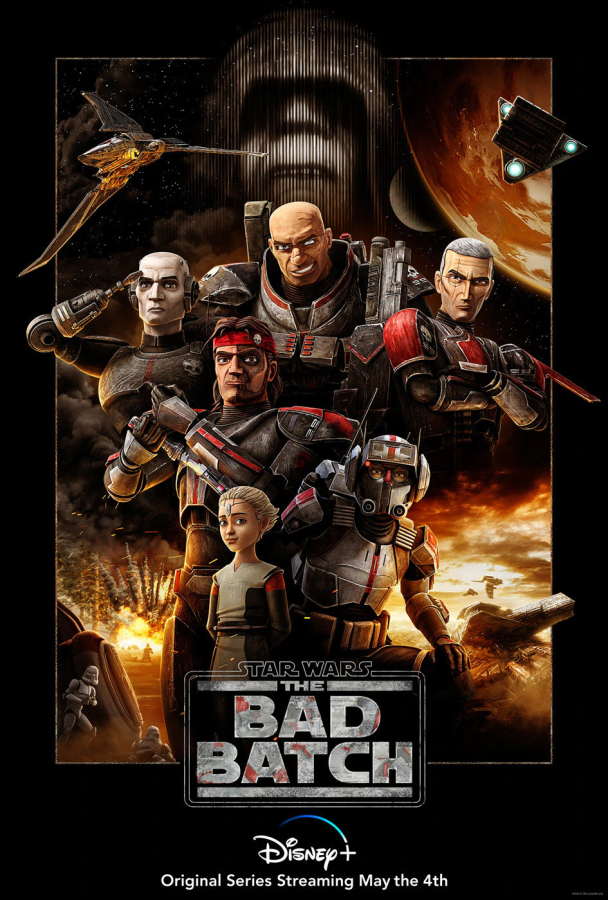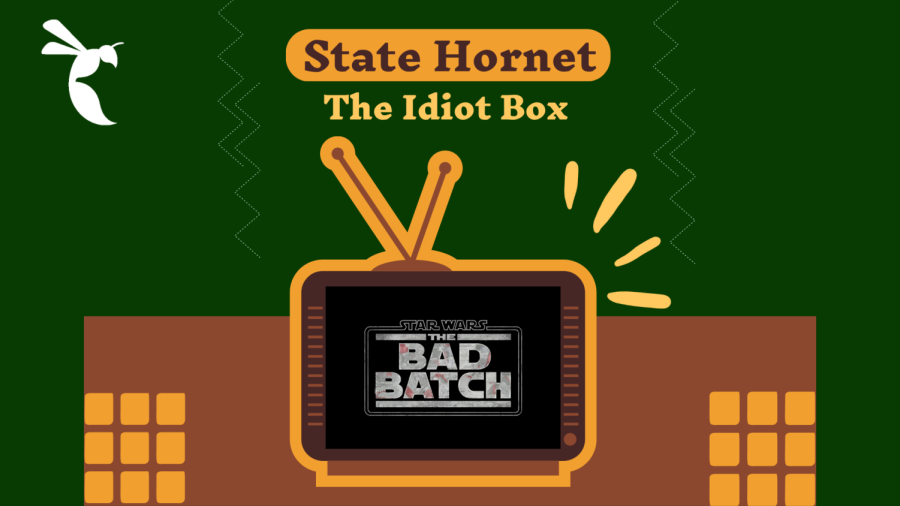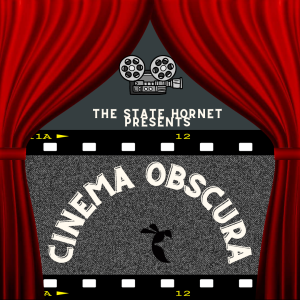The Idiot Box: ‘Star Wars: The Bad Batch,’ Study or Suffer
Research to watch a TV show is now the norm
The Bad Batch title card appears at the start of each episode. It is accompanied by a military-style drum cadence, a tribute to the show’s soldiers. (Image courtesy of Disney+. Graphic created by Ryan Ascalon.)
April 19, 2023
Disclaimer: Light spoilers for the series are included in this review.
First, if you have not watched “Star Wars: The Clone Wars,” do that before diving into “The Bad Batch.”
Second, if fans have not watched “Star Wars: The Clone Wars,” do not watch “The Bad Batch.”
Similar to how “The Mandalorian” heavily relies on source material done in other “Star Wars” work, those who haven’t done the recommended reading will be lost in Dave Filoni’s newest animated series.
While it’s understandable that a series set within an established franchise would have some level of continuity and interconnections, the show’s story overindulges in the source material.
To get the minimum enjoyment out of all that “The Bad Batch” offers, fans have to have watched “The Clone Wars,” “Rebels,” the “Star Wars” prequel trilogy and played the video game “Republic Commando.”
That’s a lot of homework to do to watch a TV show.
The show follows the exploits of Clone Force 99, a spec-ops group within the Galactic Army of the Republic whose clone trooper members have beneficial genetic mutations. The group members are Hunter, Wrecker, Tech, Crosshair and Echo —all voiced by Dee Bradley Baker.
Baker voiced the entirety of the Clone Army in “The Clone Wars” and now this animated series, continuing to amaze viewers by making each clone unique. A late addition to the squad is Omega, voiced by Michelle Ang, an unmodified perfect clone of Jango Fett, barring the fact that she is female.

The series takes place after “Revenge of the Sith” and follows the squad’s struggle to find their way in a galaxy that no longer welcomes them as war heroes but dismisses them as discarded equipment. Along the way, the group encounters the newly formed Empire, aids some budding rebellions and even faces betrayal from within their own ranks.
There is no way I can break down the plot and its characters without heavily referencing other works. As a diehard fan of the aforementioned required media, the series is a delight in expanding the lore, confirming personal theories and sensational cameos.
To the casual viewer, it’s like being invited to a friend’s work party where everyone speaks in jargon. They can hear it and know what’s being said, but they can’t understand a word.
“The Bad Batch” is not entirely inaccessible to new viewers; the series does provide some exposition to give context to some events in the show. Some of the new characters created for the series like Omega are compelling, especially because of her journey of self-discovery with the help of her “brothers.”
The series tackles themes such as identity, family and loyalty while also exploring the moral complexities of the Star Wars Universe.
But the fact remains that this type of content will only seek to dissuade newcomers to the franchise.
For die-hard fans, I cannot recommend the series enough. Fans get to see firsthand hour one of the Empire’s reign and how the clones were decommissioned, making way for Imperial stormtroopers.
The show presses all the nostalgia buttons and introduces some new clones for cosplay enthusiasts. Fans may even be overjoyed to find references to the game “Star Wars Jedi: Fallen Order” within the show.
While “The Bad Batch” is a thrilling and engaging addition to the Star Wars universe, it has flaws in its reliance on the franchise’s vast mythology. This direction in Star Wars content appears to be the new norm, as even the new “Ahsoka” series, set to release in August, will rely on this methodology.
So, if fans want to enjoy Star Wars in the future, I guess they better get studying.







































































































































